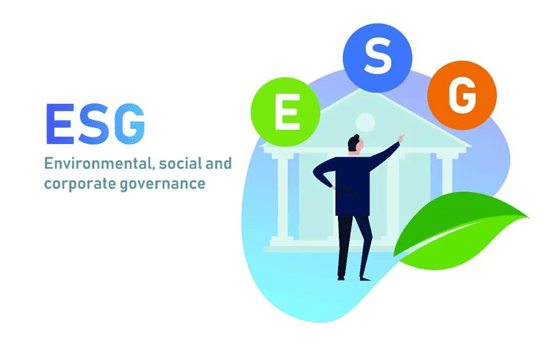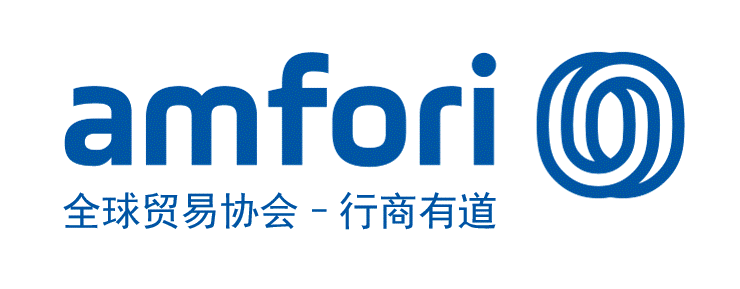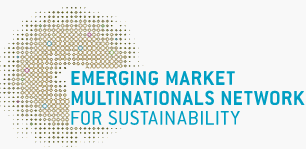Home > Knowledge > CSR Research >
Yin Gefei: ESG boosts Chinese path to modernization
2023-03-03未知Yin Gefei0
In 2022, ESG advances at a fast speed amidst China’s mainstreaming progress, which has drawn unprecedented attentions from all sectors of society.
The progress of popular ESG has been pressed ahead in many respects. To be specific, it can been seen from the State-owned Assets Supervision and Administration Commission of the State Council (SASAC)’s efforts to establish the Bureau of Social Responsibility and issue the Work Plan for Improving the Quality of Listed Companies Controlled by Central Enterprises in order to set goals and provide guidance for these companies to consolidate their awareness of social responsibilities, build and improve ESG governance systems, to China Securities Regulatory Commission (CSRC)’s endeavors to launch the Guidance for the Management of Relations between Listed Companies and Investors, which specifically requested that ESG information be included into communications between listed companies and investors. In addition, it can be seen from International Sustainability Standards Board (ISSB)’s wide solicitation of opinions on two draft standards relevant to ESG from all sorts of Chinese companies to explosive growth of the number of various ESG standards and research reports at home, as well as different kinds of ESG summits, forums and symposiums throughout the year.
In October 2022, the Report to the 20th National Congress of the Communist Party of China proposed Chinese path to modernization. This has provided a fundamental guidance for the development of Chinese enterprises in the future, and showed the direction for building the ESG system with Chinese characteristics that meets internationally accepted requirements. As Chinese companies strive to establish and improve modern enterprise management systems and build themselves into first-class enterprises in the world, they’ve been clearly practicing ESG path and actively promoting ESG efforts, which is a concrete reflection of their contributions to Chinese path to modernization.

E (environmental): develop the natural-positive economy to facilitate the modernization featuring harmonious coexistence of human and nature
In China, the development of ESG starts from E—Environmental, such as green credit, green bond, green insurance, and green fund. At present people are faced with various difficult problems, including frequent extreme weather, climate change, urban ecological deterioration. Despite many measures taken by mankind, the nature and biodiversity are still inflicted upon deadweight loss in front of people’s economic development abilities.
Several international institutions have jointly proposed a common nature protection goal for the globe. That is, by 2030 our human beings should reverse the trend of biodiversity loss, contributing to the gradual recovery of the environment till its well-rounded recovery in 2050. Thus, this requires zero natural net loss caused by each human economic activity, or the net impact greater than zero.
A manifestation of high ESG competitiveness in environment (E) is that its positive impact on nature and environmental factors are greater than negative ones. Thereby, as companies’ ESG competitiveness keeps growing, their effects on nature and environment should continuously tend to be positive.
A group of pioneering enterprises are exploring an operation mode conducive to natural and environmental protection, by taking the industry where they are and their own operation reality into consideration.
For instance, the State Grid Corporation of China and China General Nuclear Power Group (CGN) have launched a pattern of natural capital accounting to focus on their net contributions to the nature and the environment in their production and operation, and launch reports of green and low-carbon development and biodiversity development. Meanwhile, they also focus on fostering the natural-positive economy, and facilitating enterprises’ continuous positive impacts on nature and environment, thus contributing to the modernization of harmonious coexistence of humanity and nature with practical efforts.
S (Social): fulfill three-level responsibilities to boost the modernization of common prosperity for everyone
Among the S (Social) of ESG, enterprises are required to pay attention to responsibilities for related parties including the government, employees, clients, suppliers and communities. Actually, the most important foundation of balanced social incomes lies in how to deal with interest relations with employees, executives, suppliers, clients and other cooperation partners during production and operation.
Firstly, fulfil responsibilities for employees, encouraging them to achieve common prosperity. As employees are the major stakeholders in the corporate, companies are ought to handle and manage well relationships with their employees, respond to their needs and expectations, and encourage them to realize the common prosperity with companies’ development.
Secondly, create sustainable supply chains to press ahead with the common prosperity for all supply chain members. Companies integrate ESG elements with strategy and operation management, explore ways to promote innovation and reform of sustainable supply chain, enterprise operation management as well as industrial development. By doing so, they are able to build an interest community for clients, enterprises and suppliers, thus realizing the common prosperity for cooperation partners of supply chains.
Thirdly, actively contribute to the society, achieving the common prosperity for all. Companies are making contributions to the common prosperity for all people with solid actions like paying taxes by laws, proactively engaging in charity donation, and investing in community development. For example, Tencent has promoted sustainable social values by making innovations in public service patterns jointly created by the society, which effectively expands paths for companies to help realize common prosperity for all.
To some extent, ESG competitiveness is reflected in a fine management of interest relationships and responsibilities of three levels, including staff, supply chain partners and communities. Through the effective management of these three levels of responsibility, it reflects the balanced and effective contributions of enterprises to the interests of all stakeholders and society, which in essence is the contribution to the Chinese path to modernization of common prosperity.
G (governance): create sustainable enterprise culture, advancing coordinated modernization in material well-being and cultural-ethical development
The G (Governance) of ESG required enterprises to build responsible systems and institutions of operation management, which essentially is to construct the responsible enterprise culture of sustainable development.
Firstly, build ESG corporate culture and reconstruct company values with the orientation of sustainable development. In recent years, a group of pioneering enterprises have formulated and launched ESG strategies, ESG models, and sorted out and formed ESG discourse systems with their own characteristics. Also, they have discarded the company value prioritizing maximum shareholder interests step by step, enhanced core culture views of investing in employees, cooperating well with suppliers and shouldering responsibilities for more parties concerned as well as all society.
Secondly, create corporate culture of ESG systems. ESG requires companies to focus on risk and opportunity. Companies should build and improve ESG systems, realize accurate and efficient communication with interest parties in an institutionalized manner, swiftly capture, understand and handle ESG risks and opportunities, and make quick commercial decisions based upon these measures, in order to win first-mover advantages in competition or even win ESG premium.
Listed companies like Sinochem International Corporation have set up specific sustainable development or ESG committee in the board of directors, or defined ESG responsibilities in related professional committees, thus enabling ESG work to be furthered from the highest executive hierarchy of the company with an institutionalized way.
Thirdly, advocate ESG behavioral culture and advance systematic ESG practices amid corporate management and operation. Companies are supposed to develop with the index management as the starting point and with timely response to interest parties as the orientation, promote ESG awareness, formulate ESG strategy plan, compile ESG management manual, launch ESG report and form new ESG management and decision behaviors.
ESG competitiveness is essentially the competitiveness of companies’ responsible and sustainable culture. Enterprises can implement ESG beginning with G to reconstruct corporate core value, build sustainable corporate culture and create a responsible image meeting the social expectations, which promotes the coordinated development of both material well-being and cultural-ethical civilization in companies.

Facilitate Chinese companies to go global accompanied by ESG, to further modernization through the path of peaceful development
ESG are now becoming an important feature in the new round of world economic development and competition. Thus, Chinese companies go global, ESG must be upheld.
Firstly, ESG should be considered in priority. Before developing abroad, companies should systematically assess risks and challenges in local society and environments of other countries, thus utmostly avoiding ESG risks.
Secondly, companies should be protected by ESG. As Chinese companies set about businesses overseas, they are, according to local prioritized areas and requirements for ESG development, demanded to spontaneously abide by local laws, regulations and policies, strictly take control of production quality and safety, respect and protect local cultures, actively fulfill environmental conservation responsibilities, exercise professional strengths to drive community development, and ultimately improve companies’ core competitiveness through ESG practices in local areas.
For example, since 2017, CTG Brasil has cooperated with Bio Bureau of Brasil to embark on Gold Mussel Control Project, by employing genetic technology to control gold mussels’ invasion into local hydro-power stations, which effectively protected local biodiversity and achieved common benefits of all parties.
Thirdly, ESG can be used to expand businesses. While seeking for business expansion, based upon a fine image and brand reputation of green, responsible and compliant accumulated via long-term followed ESG concepts and requirements, companies can gain more development spaces and strive to contribute to local development with Chinese strength.
ESG competitiveness is becoming a significant connotation in the new round of global economic competition and cooperation. Chinese enterprises will abide by ESG views and requirements throughout the whole Go Global process. They will uphold an open, green and clean philosophy of high-quality Belt and Road cooperation, which focuses on extensive construction, joint consultation and shared benefits, and the pursuit of high-standard and sustainable development that benefits the people, form close ties with people of all countries, and build a responsible and green international image of Chinese companies. With these efforts, they are able to advance the modernized path of peaceful development with ESG.
Written by Yin Gefei
Translated by GoldenBee Consulting
Best Practices
- The 100-year brand — Air Liquide also has a sense of juvenile
- Beijing Public Transportation Corporation: Developing green transportation to build a harmonious and livable capital
- CGN: Building a modern factory in barren deserts and developing a new win-win cooperation model along “Belt and Road”
Upcoming Event

All the materials on the site “Source: XXX (not from this site)” have been reprinted from other media. They do not imply the agreement by the site.
All the materials with “Source: CSR-China Website” are the copyright of CSR-China Website. None of them may be used in any form or by any means without permission from CSR-China Website.
GoldenBee Official WeChat
Copyright © Csr-china.net All Right Reserved.
京ICP备19010813号










